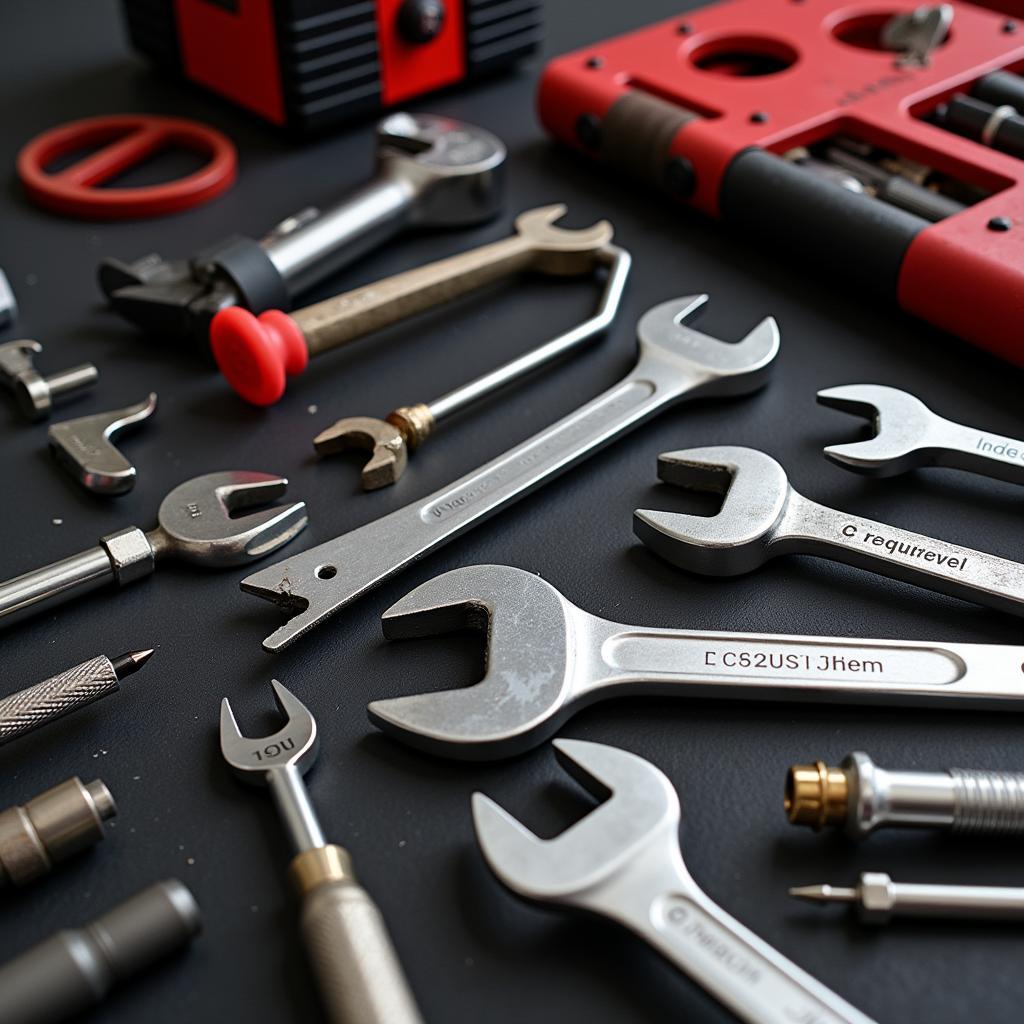A Hot Start Car Problem is a common issue that many car owners experience. It happens when your car struggles to start after it has been running for a while, and then cools down. This can be a frustrating experience, leaving you stranded and unsure of what to do.
This article will delve into the common causes behind a hot start car problem, offer effective solutions to fix the issue, and guide you on how to prevent it from happening in the future. We’ll cover everything from faulty sensors and electrical issues to fuel system malfunctions and even mechanical problems.
Common Causes of a Hot Start Car Problem
There are several reasons why your car might have a hot start problem. These can range from simple issues that you can fix yourself to more complex problems requiring professional attention. Here are some of the most frequent causes:
1. Fuel System Issues
- Fuel Pump Malfunction: A faulty fuel pump can struggle to deliver sufficient fuel pressure when the engine is hot, leading to a hot start problem.
- Fuel Filter Clogging: A clogged fuel filter restricts fuel flow, particularly when the fuel is hot and viscous. This can prevent adequate fuel reaching the engine, resulting in starting difficulties.
- Fuel Injector Problems: Clogged or faulty fuel injectors can hinder fuel delivery, especially under hot conditions.
2. Electrical System Problems
- Crank Sensor Malfunction: The crankshaft sensor is responsible for detecting engine speed and position, which is crucial for proper ignition timing. A faulty sensor can disrupt the timing, leading to starting issues.
- Ignition Coil Failure: An ignition coil can fail, especially when subjected to high heat. This can prevent a spark from reaching the spark plug, leading to misfires and difficulty starting.
- Battery Problems: A weak or failing battery can struggle to provide enough power to crank the engine, particularly after the battery has been under stress from a hot start.
3. Engine Issues
- Valve Timing Issues: Incorrect valve timing can lead to a hot start problem. This can occur due to a faulty timing belt or chain, or due to wear and tear on the valve train components.
- Compression Loss: A loss of engine compression can cause a hot start problem. This could be due to worn piston rings, leaking valves, or other mechanical issues.
4. Sensors and Actuators
- Temperature Sensor Problems: A faulty coolant temperature sensor can give the engine control unit inaccurate readings, disrupting fuel and ignition timing.
- Throttle Position Sensor Issues: A malfunctioning throttle position sensor can hinder fuel and air delivery, especially when the engine is hot.
How to Troubleshoot and Fix a Hot Start Car Problem
Now that you understand the potential causes, let’s explore how to diagnose and fix a hot start problem.
1. Start with the Basics
- Check the Battery: A simple test with a voltmeter can reveal if your battery is strong enough to start the engine.
- Inspect the Fuel Lines: Check for leaks, cracks, or blockages in the fuel lines. Ensure the fuel filter is clean and free of debris.
- Check for Loose Connections: Inspect electrical connections related to the fuel pump, ignition system, sensors, and actuators for any looseness or corrosion.
2. Consider Professional Help
If you’re unable to identify the issue, or if you suspect a more complex problem, it’s recommended to take your car to a qualified mechanic. They have specialized tools and expertise to diagnose and repair the problem effectively.
3. Potential Solutions
Depending on the identified cause, the solution may involve:
- Replacing Faulty Components: This could include the fuel pump, fuel filter, ignition coil, spark plugs, battery, sensors, or actuators.
- Cleaning or Replacing Fuel Injectors: Cleaning or replacing clogged fuel injectors can restore optimal fuel delivery.
- Repairing Mechanical Issues: If there are valve timing issues, compression problems, or other mechanical problems, they need to be addressed professionally.
How to Prevent a Hot Start Car Problem
- Regular Maintenance: Adhering to the recommended maintenance schedule for your vehicle is essential. This includes regular oil changes, air filter replacement, and fuel filter replacement.
- High-Quality Fuel: Using high-quality fuel can help minimize fuel system problems and reduce the risk of a hot start issue.
- Address Minor Issues Promptly: Don’t ignore warning signs or minor issues with your car. Addressing them early can prevent more serious problems from developing, including hot start issues.
“Hot start car problems can be a real hassle,” explains John Smith, a certified automotive technician with over 20 years of experience. “By understanding the causes and implementing preventative measures, you can minimize the risk of encountering this issue.”
Frequently Asked Questions
Q: Is a hot start car problem a serious issue?
A: While not always a major issue, a hot start car problem can indicate underlying problems that could worsen over time. It’s important to diagnose and fix the issue to prevent more serious damage and ensure reliable operation.
Q: What are some signs of a hot start car problem?
A: Some common signs include the engine cranking but not starting, difficulty starting after the engine has been running, a rough idle, or a decrease in engine performance.
Q: Can I fix a hot start car problem myself?
A: Some simple issues like a weak battery or a loose connection can be addressed yourself. However, for more complex issues, it’s best to seek professional assistance.
Q: How can I prevent a hot start car problem?
A: Regular maintenance, using high-quality fuel, and addressing minor issues promptly can help prevent hot start problems.
If you’re experiencing a hot start car problem, we recommend contacting our team at AutoTipPro. Our experienced technicians can diagnose and fix the issue quickly and efficiently. Contact us today at +1 (641) 206-8880 or visit our office at 500 N St Mary’s St, San Antonio, TX 78205, United States.






Leave a Reply